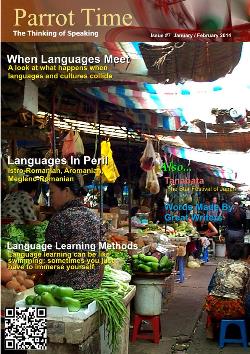
|
Partial Drowning  Friends at a French language immersion camp For those that can't really afford to move to another country for a few months or longer, there are ways in which at least partial immersion can be achieved. As was noted, any amount of time not immersed will decrease the efficiency, since the student's mind will go back to using their native tongue and the new material will slip into the back of their mind. Partial immersion is done by placing the learner in an environment which uses the target language for a part of the day. How this differs from a normal language class is that everything is presented in the language. The teacher will address the students only in the new language and they are allowed to only respond in it as well. There is rarely any explanations in the native language, although that will depend on the intensity of the course. As can be expected, this has other problems besides being just a part time event. Even if the teacher is a native or sufficiently fluent speaker to make the learning worthwhile, he or she is likely to be the only real source available to the students. Interaction with the other students will only repeat whatever the teacher has taught, while in true immersion, a learner would have the chance to interact and learn from a much larger number of people. Some of this limited diversity can be reduced by bringing in other fluent or native speakers for a large portion of the class, allowing for the students to have other sources to interact with. Outside media should also be highly accessible, such as TV and radio programs from the country of the language. Newspapers and magazines can also play an important role because a student must also learn to read the language. With the internet, there is also the opportunity to open up a classroom to talking to native speakers in their countries using computers. How such a program is set up could be problematic, however, since to be the most efficient, only the one language would be spoken, so the native speakers wouldn't really benefit from the exchange. Daily Life Some people, while studying a language, may already utilize some aspect of partial immersion. They might listen all day to a foreign radio station, or watch foreign films without subtitles in their language. They could try to read foreign newspapers and magazines without looking up any words. They might stick pieces of paper on objects around their house with the name of the object in the new language written on them, thus making them constantly think in that language. A learner could also use the internet to communicate with a native by using a voice or text chat, a forum, or some other system. Many language exchange programs exist online to help people find others that will help them in their learning. Costs Since the most effective form of immersion involves travelling and living in another country for a long period of time, it could become quite expensive. There are so many factors that might affect this, though, that the true cost is impossible to estimate. For example, our Italian woman might be able to live with relatives in London for several months, costing her little more than the trip to there and back. If she attends an immersion school there, the cost would suddenly increase greatly, because she is then paying for the time of teachers and the use of the facilities, plus the education in various courses. Even an immersion school just for the language over a few months can be costly. For example, a nine-week Spanish course in Spain could cost a student over €1500. That includes the cost of a shared apartment, but not food or travel, and the classes are a mere 45 minutes a day. Alternatives New sounds are a problem no matter what learning method is used, and immersion as an adult isn't likely to make it any easier. Other learning methods often include some aspect of immersion. For example, some books for teaching the language are written only in the target language... no explanations or vocabulary in one's native language. Some software, like Rosetta Stone, have the student learn using pictures instead of their native language, supposedly forcing the learner to understand it "visually". Some audio courses are even completely in the new language. Conclusion  Welcome sign at a bilingual immersion school No matter how someone chooses to learn a language, they will undoubtedly benefit from any amount of time they can spend being immersed in the language itself, whether it's intensely for several months, a few hours in a class each day, or even through self immersion at home. It can't truly replace the experience everyone has in learning their native tongue, because we can never go back to being blank slates, but it is probably the closest one can get to that situation. This is the last article in our series on language learning methods. We hope you have found them beneficial to finding out what possible ways might best suit your own learning needs. Has anyone here ever taken a language immersion class, either locally or abroad, or attended a language immersion summer camp of some kind? Can you explain a little about the experience? PT |
| Language Learning Methods - Immersion | |||||||
| Writer: | Erik Zidowecki | ||||||
| Images: | |||||||
| |||||||
All images are Copyright - CC BY-SA (Creative Commons Share Alike) by their respective owners, except for Petey, which is Public Domain (PD) or unless otherwise noted.
comments powered by Disqus
















